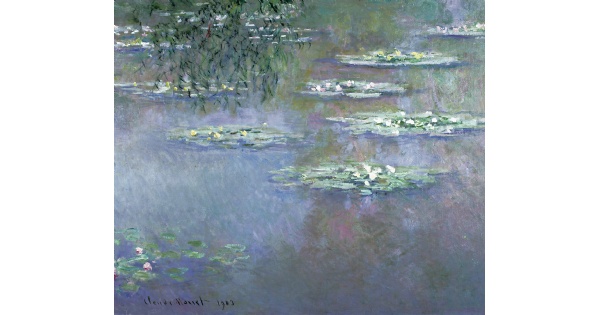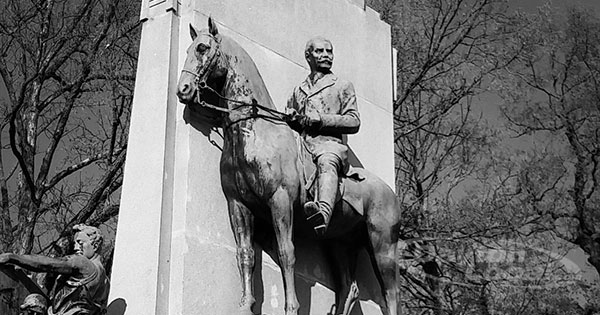
"Waterlilies" by French Impressionist Claude Monet is part of the permanent collection at The Dayton Art Institute.
Monet's Waterlilies at the Dayton Art Institute
Fun Fact About Dayton Art Institutes “Waterlilies”
Dr. Esther Seaver, Director of The Dayton Art Institute in the first part of the 1950’s became aware of this Waterlilies painting by Claude Monet (1903) during her tenure. Dr. Seaver ultimately convinced Mr. Joseph Rubin, who ran Loma Dress Corporation in New York City to give the painting to the Dayton Art Institute, where it remains a part of the permanent collection today. Waterlilies is currently on display. Please make it a point to include it on your must see list.
Waterlilies
Claude Monet, French, 1840 - 1926
1903
Oil on canvas, 32 x 40 inches
Gift of Mr. Joseph Rubin
Location: Gallery 212, the Bieser Family Gallery of Late 19th Century French Art
Monet’s painting is one of hundreds he did of his lush garden and lily pond surrounding his home in Giverny, some thirty miles outside Paris. After moving there in 1886 he gradually added plantings carefully designed so that some portions would be in bloom nearly year round. As his fame and popularity grew, he was able to acquire an additional strip of land in 1893 where he dammed a creek to make a pond. These gardens and the lily pond became the primary focus of his art for the last forty years of his life.
Today it is sometimes hard to appreciate how radical the waterlily paintings were when Monet painted them. The pond and the lilies floating on it are seen from close to the water’s surface. While we instinctively know the water is parallel to the earth as it recedes away from us, we just as quickly accept Monet’s depiction of it on the vertical plane of the canvas. And, as he did consistently throughout his remarkably productive career, Monet records with paint his careful observation of nature at differing times of day, here the reflections of trees and sky on the water’s surface. Commenting on Monet’s keen powers of observation, fellow Impressionist Paul Cézanne said, “Monet is only an eye, but what an eye!”
Links & Tags
Dayton Art Institute.
Dayton Art Institute - Committed to enriching the community by creating meaningful experiences with art that are available to all. Visit us often to enjoy our diverse collections, world class exhibits and more.



















